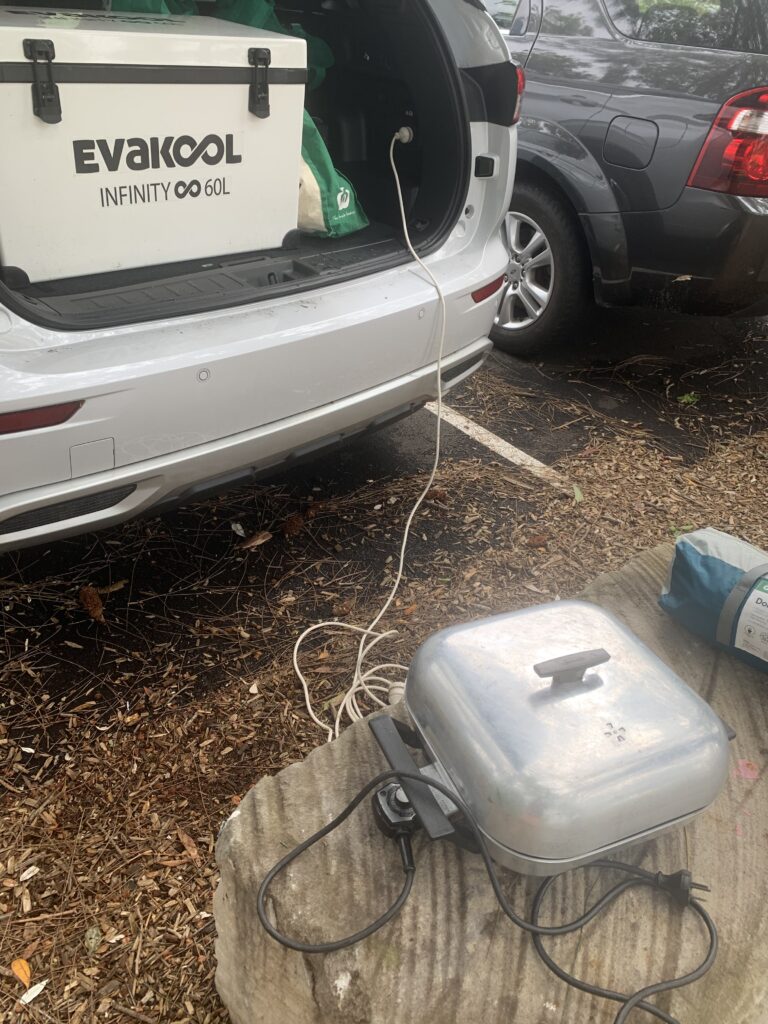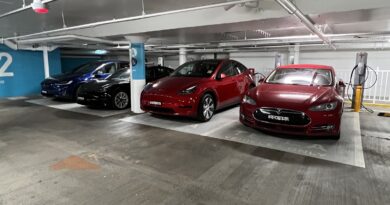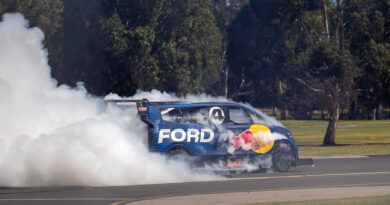Mitsubishi Outlander PHEV long term update: Camping is depraved and should be banned
Now look, I love camping as much as the next man – as long as the next man is allergic to canvas, Gore-Tex and wood smoke and has a claustrophobes fear of sleeping bags, and tents – but I do wish it came with a few more mod-cons.
Like roofs and beds, and electricity. Fortunately, finally, my long-term Mitsubishi Outlander PHEV looked set to make at least one of these things possible as my family, or at least my wife, dragged me off to Bundeena, at the very leafiest edge of Sydney, abutting the beautiful Royal National Park.
I was also seriously thinking about sleeping in the back of the Mitsubishi, which looks far more comfortable than a tent, only to have that plan scuppered by a friend’s teenage son, who beat me to it.
READ MORE: Mitsubishi Outlander PHEV joins out long term test fleet
The Outlander’s big advantage – and one that I hoped would make me look like a hero and a genius, not only to my friends but everyone in the campsite, and indeed the village – was its vehicle-to-load (V2L) abilities.
The Mitsubishi is fitted with a typical, familiar three-pin plug in the rear hatch area and all I had to do, once I’d endure the typical hell mouth horror of setting up my tent, was wait for my moment to shine. Pretty much any time someone said “I wish I could plug in my…”.
One good thing about going to Bundeena is that you have to take a truly fantastic road to get there, Sir Bertram Stevens Drive, which winds up, over and through the picturesque Royal National Park, offering stunning ocean views, quiet rainforest moments and many, many wonderful corners.
It’s a favourite place of mine to take sports cars, and thus a good place to test the handling of the Outlander.
Now, obviously, it’s no sports car, and its bulk means it’s probably going to enjoy sharp hairpins the way I enjoy birds waking me with a dawn chorus, but it actually performed surprisingly well. There’s some body roll, but it’s not awful, the steering is reasonably involving and through longer, less brutal bends it can be genuinely enjoyable. The Outlander is never going to blow your hair off with its speed, but as the Royal National Park is largely a 60 to 80km/h zone these days, it’s not such an issue.
This was actually my second trip out of town with the Outlander, with the first one being a good long run down to the NSW South Coast, and what I’ve noticed is that the PHEV, with its single-gear transmission, can make some very weird noises, but only once you get up above 100 or 110km/h.
Revving up to that point, you get a kind of weird, whining and spinning sound that’s evocative of early vacuum cleaners. It’s quite… unique, and you never really notice it around town, but at highway speeds it’s quite an ear catcher.
Other than that, I found the long-distance drives I did in it quite enjoyable, largely thanks to my Exceed Tourer spec level, which means my seats are super comfortable and the cabin is pleasantly pseudo European. There are cheap-ish pieces of plastic here and there, and the multimedia system isn’t exactly world beating, but overall, the level of perceived quality is higher than you might expect at $68,490 price point.
Over my two out-of-town trips, I tried to be careful about using the EV range of the PHEV where it made sense, and as we headed to the camp ground I was careful to use “Save” mode, so there’d be something in the battery for me to show off with.
I managed to get 1108km out of a full tank on my longer run, but still averaged 5.8 litres per 100km for that tank run over all, and 23.2kWh. I was also forced to recharge it on a normal plug at my parents’ house down south, rather than using my home charger; that slower charge took 10.5 hours.
And now I must share with you my dirty little secret. As I feared, I am not, always, 100 percent committed to recharging the battery, and my wife pretty much doesn’t do it at all.
This means, as I feared, that we’re not always taking full advantage of the pure EV part of the Outlander’s offering and the reason for that is simple human nature. Unlike a BEV, I know I don’t need to charge it, so I often just won’t go to the trouble of reversing it up our driveway, which I need to do to get to the charger.
I know, I’m ashamed of me too. But I’ll try to do better. I’ve not gotten past 1000km from a tank of late, and that’s purely my fault.

But back to the camping. My moment of glory almost arrived when someone said they were cooking nachos and that they’d brought an electric frypan. They were about to walk off to the campsite’s laundry/washing up area to cook in there when I made a flourish of opening my boot and offered them to plug in.
And… nothing happened. No power, no idol worship for me. Nothing. And off they went with their frypan, shaking their heads, while I dove into the front seat to read the Outlander’s manual, something I would never normally do.
It turns out there’s a little button you need to press to turn the power switch on, and you can then cleverly select how much of your battery you’re willing to give to powering other people’s things, so you can leave yourself with enough to get home, if you want to.
Once I had it working, it was wonderful and I felt very clever and superior indeed.
But camping still sucks.




